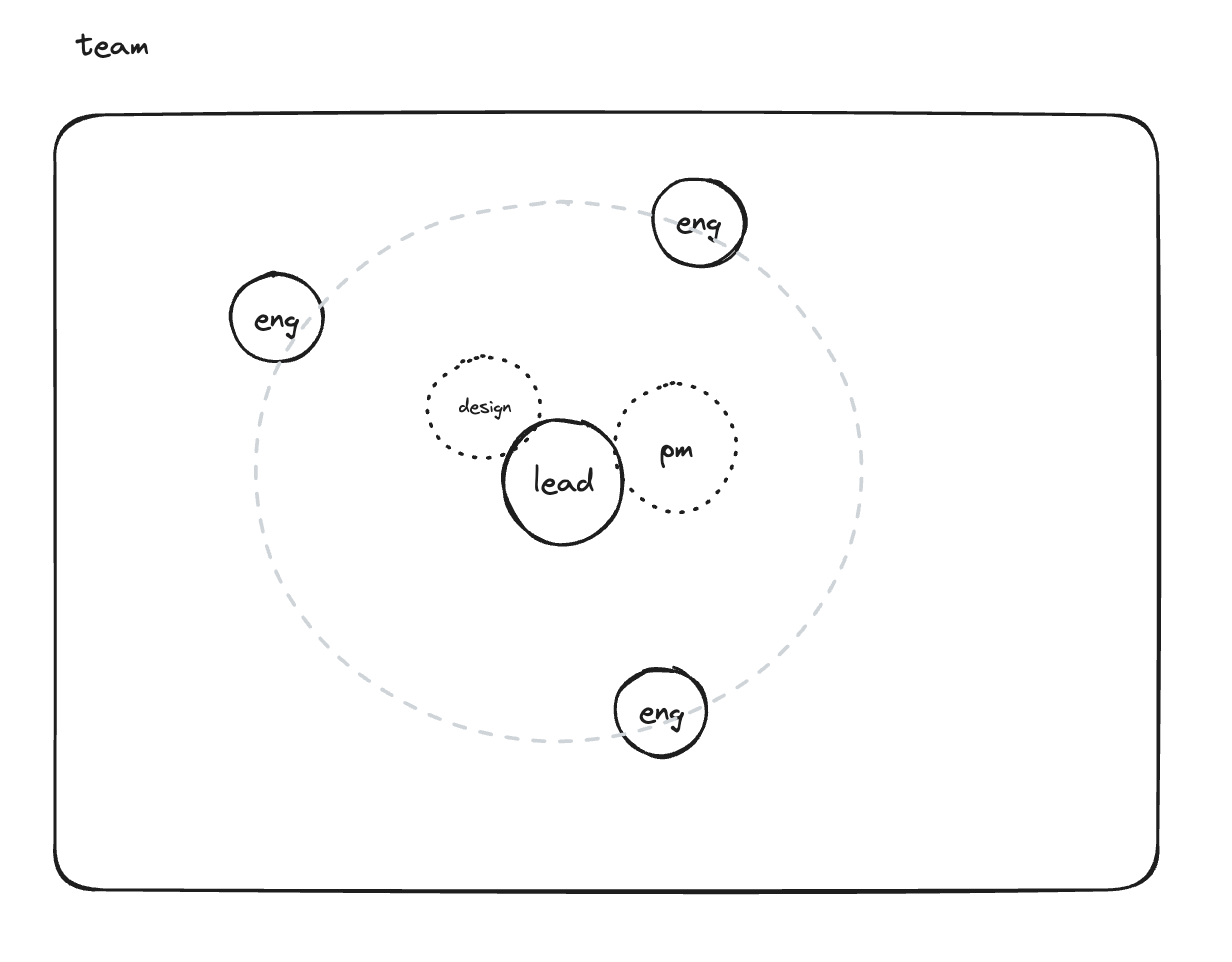An analogy that’s proved useful for me when describing how tech teams can operate effectively is the model of an atom.
At the centre is the nucleus, the stable, consistent part of the atom around which everyone and everything else (the electrons) orbits.1
The exact makeup of the nucleus depends heavily on what the purpose of the team is. If it’s a cross-functional product team, then that nucleus consisting of a Tech Lead and a Product Manager is pretty common. You may also have a designer in there, depending on how tightly knit the design is to the product workflow.
There are different types of teams, with different requirements from the nucleus. For example, I’ve seen an internal platform team where the nucleus consists of a DevOps engineer, a Backend engineer, and a more Frontend/Product focused engineer. This made sense given the mandate of the team. You could also easily have a core of one, such as a sole Product Engineer or Technical Product Manager.
Whatever the setup, the nucleus of the team is the centrifugal core from which decisions are made and spun out to affect the rest of the team. This core is where new requirements come in, where new features are scoped, where strategy is made, and where tickets are written.
Not all this work will be done exclusively by the core - some of it will necessarily involve or be delegated to other members of the team. But the core remains accountable for these actions, even when they’re not responsible. They may delegate ticket writing to an engineer on the team, but it’s up to them to ensure that engineers get it done. If there’s an issue with the feature, it’s members of the nucleus who should be in the firing line, not those they delegated the task to.
The key to a successful team is that the nucleus remains closely aligned. If you achieve this, then the circulating electrons will usually stay in a stable field. But how do you do that?
Stay tuned.
I know this is a very inaccurate model of what actually happens at the subatomic level. ‘The Quantum Team’ will be the title of a future post.


